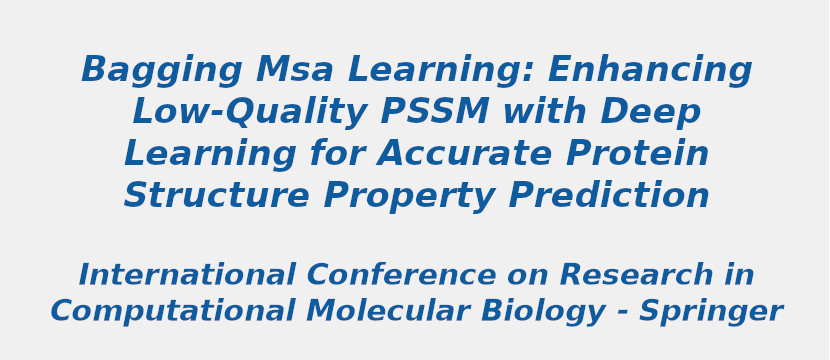Research Area: Machine Learning
Accurate predictions of protein structure properties, e.g. secondary structure and solvent accessibility, are essential in analyzing the structure and function of a protein. PSSM (Position-Specific Scoring Matrix) features are widely used in the structure property prediction. However, some proteins may have low-quality PSSM features due to insufficient homologous sequences, leading to limited prediction accuracy. To address this limitation, we propose an enhancing scheme for PSSM features. We introduce the “Bagging MSA” method to calculate PSSM features used to train our model, and adopt a convolutional network to capture local context features and bidirectional-LSTM for long-term dependencies, and integrate them under an unsupervised framework. Structure property prediction models are then built upon such enhanced PSSM features for more accurate predictions. Empirical evaluation of CB513, CASP11, and CASP12 datasets indicate that our unsupervised enhancing scheme indeed generates more informative PSSM features for structure property prediction.
Keywords:
Deep learning
Unsupervised learning
Enhancing PSSM
Protein secondary structure prediction
Author(s) Name: Yuzhi Guo, Jiaxiang Wu, Hehuan Ma, Sheng Wang & Junzhou Huang
Journal name:
Conferrence name: International Conference on Research in Computational Molecular Biology
Publisher name: Springer
DOI: 10.1007/978-3-030-45257-5_6
Volume Information:
